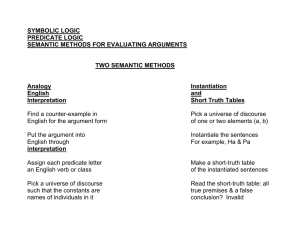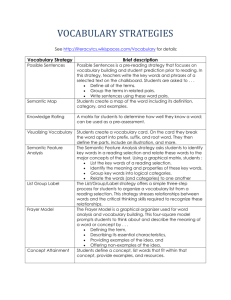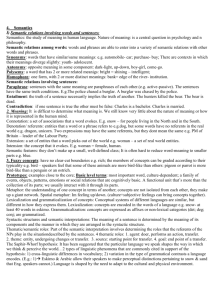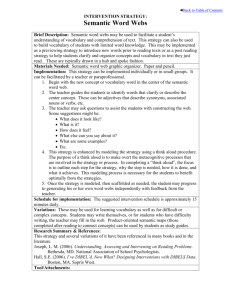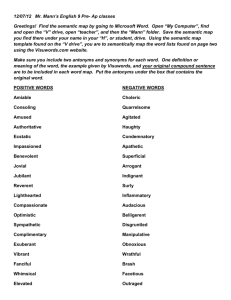SEMANTIC METHODS: VALIDITY, EQUIVALENCE, LOGICAL TRUTH
advertisement
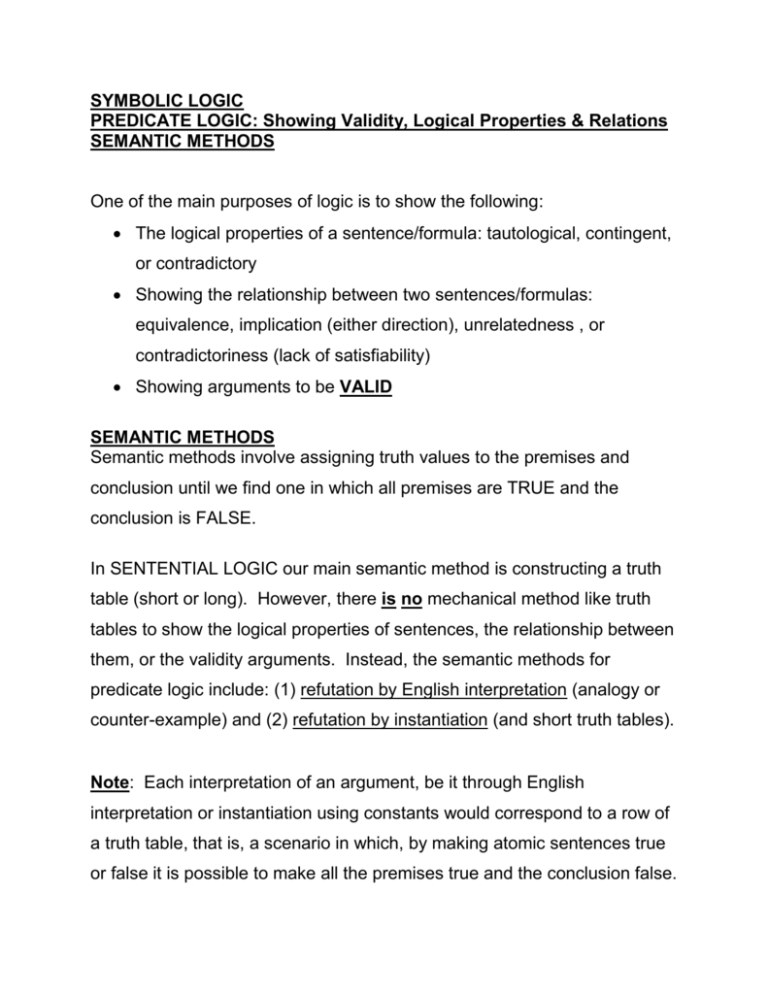
SYMBOLIC LOGIC PREDICATE LOGIC: Showing Validity, Logical Properties & Relations SEMANTIC METHODS One of the main purposes of logic is to show the following: The logical properties of a sentence/formula: tautological, contingent, or contradictory Showing the relationship between two sentences/formulas: equivalence, implication (either direction), unrelatedness , or contradictoriness (lack of satisfiability) Showing arguments to be VALID SEMANTIC METHODS Semantic methods involve assigning truth values to the premises and conclusion until we find one in which all premises are TRUE and the conclusion is FALSE. In SENTENTIAL LOGIC our main semantic method is constructing a truth table (short or long). However, there is no mechanical method like truth tables to show the logical properties of sentences, the relationship between them, or the validity arguments. Instead, the semantic methods for predicate logic include: (1) refutation by English interpretation (analogy or counter-example) and (2) refutation by instantiation (and short truth tables). Note: Each interpretation of an argument, be it through English interpretation or instantiation using constants would correspond to a row of a truth table, that is, a scenario in which, by making atomic sentences true or false it is possible to make all the premises true and the conclusion false.
